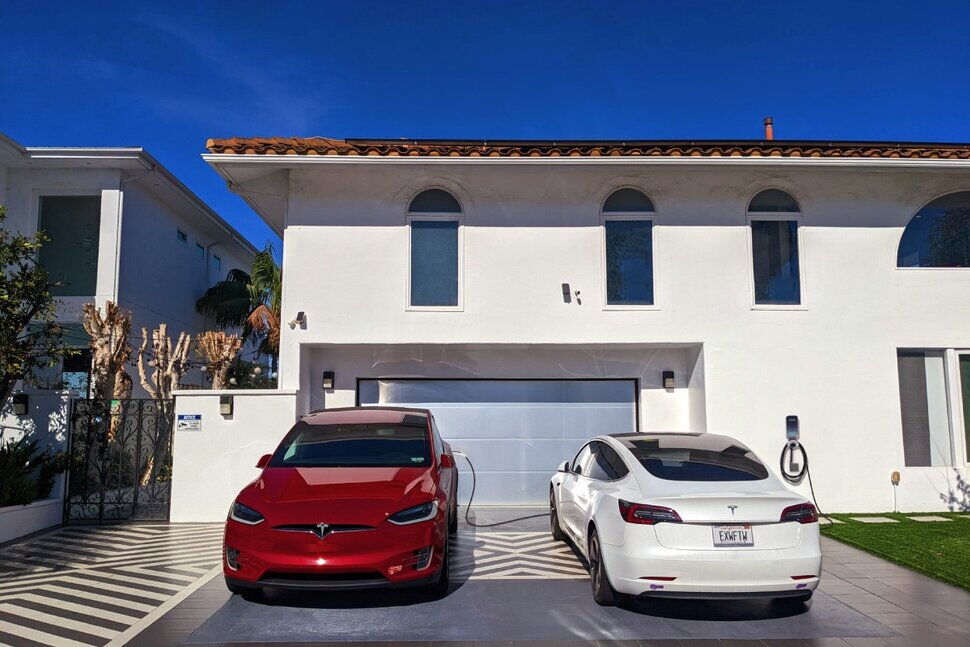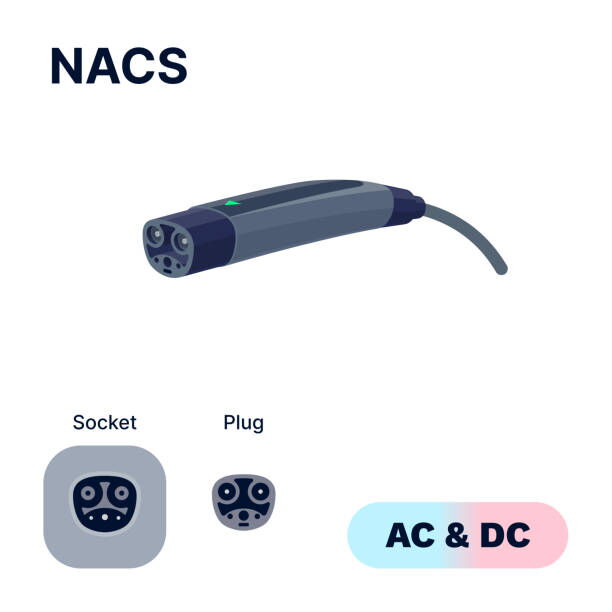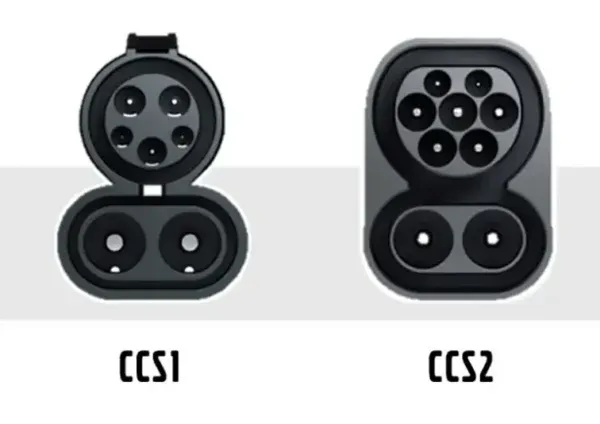As electric vehicles (EVs) continue to surge in popularity, the infrastructure supporting them must evolve in tandem. A critical aspect of that infrastructure is the charging standard used to power EVs. In North America, the two leading contenders are the North American Charging Standard (NACS)—developed by Tesla—and the Combined Charging System (CCS)—backed by a coalition of global automakers.
While both offer fast and efficient charging solutions, their technical specifications, adoption rates, and long-term implications for EV owners differ significantly. As automakers and consumers make critical decisions about the future of mobility, understanding the differences between NACS and CCS is more important than ever.
In this article, we break down the core features, advantages, and limitations of each standard and analyze what their competition means for the broader EV market.

Formerly known simply as the Tesla charging connector, the North American Charging Standard (NACS) is a proprietary technology developed by Tesla to serve its own fleet of electric vehicles. Known for its sleek and compact design, NACS supports both AC (alternating current) and DC (direct current) fast EV charging using a single, streamlined connector.
Unlike older standards that require separate ports or adapters for Level 1, Level 2, and Level 3 charging, NACS simplifies the charging process by consolidating it into one easy-to-use plug. Tesla’s proprietary Supercharger network, which now comprises over 50,000 fast-charging stalls globally, is built around this technology.

In a pivotal move, Tesla announced in November 2022 that it would open the NACS specification to other automakers and charging network providers. The decision signaled a major shift in strategy—from a closed ecosystem to an open standard—and potentially reshaped the future of EV charging in North America.
By June 2023, the Society of Automotive Engineers (SAE) announced plans to standardize the NACS connector, a development that further legitimized its role in the charging ecosystem and paved the way for broader adoption by non-Tesla manufacturers.
The Combined Charging System (CCS) is an internationally recognized EV charging standard that offers both AC and DC fast charging capabilities. Initially developed by a group of global automakers—including BMW, Volkswagen, Daimler, Ford, and General Motors—CCS has become the default fast-charging standard in Europe and parts of Asia.
There are two major versions:
CCS Type 1, primarily used in North America
CCS Type 2, used in Europe and other global markets

CCS builds upon the existing J1772 (Type 1) or Type 2 AC plug by adding two large pins at the bottom for DC fast charging. This "combined" design makes it versatile but results in a bulkier connector compared to NACS.
CCS supports high-voltage DC charging up to 350 kW, depending on the charger and vehicle capabilities. This makes it suitable for ultra-fast charging stations like those operated by Electrify America and EVgo.
CCS is widely supported by major global automakers, including Hyundai, Kia, BMW, Mercedes-Benz, Volkswagen, Lucid, and Audi, and is the most prevalent standard across Europe.
One of the most visible differences between NACS and CCS is the physical design. The NACS connector is:
Smaller and lighter
Capable of AC and DC charging through a single port
Designed for ergonomic use, often described as more user-friendly
The compact size of NACS also enables a sleeker integration into vehicle designs, potentially offering more flexibility in EV aesthetics and aerodynamics.
In contrast, CCS is:
Larger in size, especially the CCS Type 1 used in North America
Requires two additional DC pins for fast charging, added below the AC portion
Sometimes seen as more cumbersome for users, especially in adverse weather conditions
While CCS offers broad compatibility and proven performance, its bulkier design can be seen as a drawback in terms of user experience.
Both NACS and CCS offer high-speed charging capabilities—but real-world results can vary depending on infrastructure and vehicle design.
Tesla’s Supercharger V3 stations support up to 250 kW
Theoretically, NACS could support higher speeds, depending on vehicle development
Efficient communication between vehicle and charger enables optimal charge curves
CCS chargers can deliver up to 350 kW (e.g., Electrify America’s 800V ultra-fast chargers)
Widely deployed in public networks, particularly in Europe and North America
Offers flexibility across a broad range of vehicle voltages
While CCS can technically provide faster speeds, the real bottleneck often lies in:
Battery architecture (e.g., 400V vs. 800V systems)
Charging station performance
Software-controlled power management
For most EV drivers, both NACS and CCS offer comparable real-world charging times for compatible vehicles.
CCS is currently the dominant EV charging standard in Europe, supported by EU regulations that mandate its use in public DC charging stations. In North America, CCS has been adopted by:
GM
Ford
Volkswagen
Hyundai/Kia
Lucid
Rivian (initially)
It is also supported by major charging networks like:
EVgo
ChargePoint
Electrify America
Originally exclusive to Tesla vehicles, NACS is now being adopted by non-Tesla automakers, including:
Ford
GM
Rivian
Honda
Mercedes-Benz
Volvo
These manufacturers plan to begin integrating NACS ports into their vehicles by 2025, with some offering adapters to access Tesla’s Supercharger network in the interim.
Tesla's Supercharger network is often considered the gold standard for reliability, offering fast charging with minimal wait times and a superior user experience.
Tesla drivers benefit from an integrated system where:
Navigation, charging, and payment are all built into the Tesla app and infotainment system
Superchargers automatically identify the vehicle and start charging without additional steps
The user experience is streamlined, reducing errors and hassle
CCS networks vary in quality. While major providers are improving reliability, challenges persist:
Users often need multiple apps or RFID cards
Station malfunctions and payment errors are not uncommon
Compatibility issues between older CCS vehicles and new charging stations occasionally arise
Efforts like the Plug & Charge protocol are being developed to create a more Tesla-like experience for CCS users, but widespread adoption is still underway.
The tide may be turning in favor of NACS in North America. Several trends suggest a growing momentum:
Major OEMs announcing NACS adoption signal strong industry support
Opening Tesla’s robust charging network to non-Tesla EVs improves the appeal
Formal recognition by SAE increases credibility among regulators and manufacturers
However, globally, CCS remains entrenched. The European Union mandates CCS ports on all public chargers, and Asia continues to support a mix of standards including CHAdeMO, GBT, and CCS Type 2.
If momentum continues, NACS could become the default standard in North America within the next five years. Tesla's openness, coupled with its infrastructure advantage, may pressure other networks to install NACS-compatible hardware—or risk becoming obsolete.
Globally, CCS is expected to retain dominance due to:
Government regulations
Existing infrastructure
Support from multiple automakers
The likely outcome may be a dual-standard future, where EVs are equipped with multi-port access or universal adapters, similar to how multi-region smartphones work today.
The battle between NACS and CCS represents more than just two plugs—it reflects different philosophies in EV infrastructure design. Tesla’s NACS emphasizes elegance, simplicity, and integration. CCS, by contrast, offers open access and global compatibility.
As EV adoption continues to accelerate, consumers, automakers, and infrastructure providers must weigh the trade-offs. While there may not be a single global winner, one thing is clear: a more unified and user-friendly charging experience is coming—and that’s good news for everyone on the road to electrification.